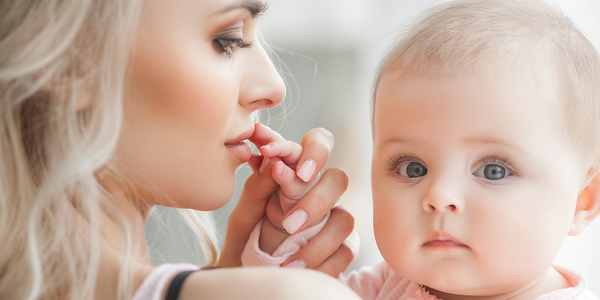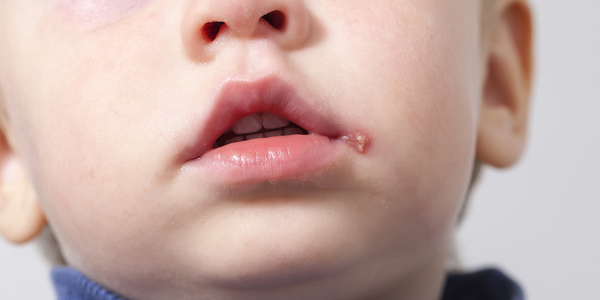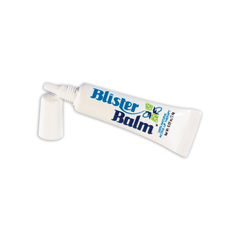It’s common for toddlers and children to get cold sores by kissing or touching a person with open cold sores, or by sharing eating utensils, towels, or other items with an infected person. Newborns rarely get cold sores, but babies can catch HSV-1 through contact with an open cold sore as well. Therefore, people with a cold sore should avoid kissing babies or letting babies touch the sore.

What age do kids start getting cold sores?
Many kids get infected with HSV-1 during the preschool years. According to the American Academy of Pediatrics, many children will start to get cold sores by the age of 5.
Are cold sores dangerous for toddlers?
Cold sores are common and relatively harmless in toddlers and children, but the cold sore virus can be dangerous for babies. When a child develops a cold sore for the first time, the blisters often spread beyond the lips to the mouth and gums. Occasionally a child may also have a fever, swollen and tender lymph glands, sore throat, irritability and drooling. However, if cold sores appear near their eyes, call your pediatrician. HSV-1 is especially dangerous to babies under 6 months of age because babies immune systems are not well developed until after about 6 months old. Therefore, signs that a baby may have been infected with the cold sore virus include low grade fever and one or more small skin blisters. These symptoms can occur 2 to 12 days after HSV-1 exposure. If these occur or if you have any concerns, call your pediatrician.

Can a child with a cold sore play with other kids?
Children usually can go to child care or school with an active infection, but to prevent spreading the cold sore virus to other children it’s smart to keep them home if they drool a lot or are having their very first cold sore outbreak. Try to prevent your child from scratching or picking at cold sores. This can spread the virus to other parts of the body, such as fingers and eyes, as well as to other children who touch toys and other objects they play with. Wash hands and clean toys regularly. If your child has cold sores, it’s important to teach him or her how to keep from spreading them to others.
Can kids stop getting cold sores?
The virus remains in children for the rest of their life and the recurrence of cold sores is highly variable. Some children may never get another cold sore, while others may have multiple outbreaks a year. When the virus does reactivate, cold sores typically form again at the same spot but usually not inside of the mouth.
What can I put on my child’s cold sore?
 Treatment is available for kids with cold sores. Start with cold liquids, ice, or frozen juice bars to help soothe mouth pain. Avoid giving children spicy or acidic foods (e.g., citrus fruits or tomato sauce). For lasting relief of pain and itching associated with kids cold sores, use over-the-counter topical medicine Blister Balm® External Analgesic Ointment. A unique 100% naturally medicated effective and immediate cold sore treatment for kids 2 years of age and older.
Treatment is available for kids with cold sores. Start with cold liquids, ice, or frozen juice bars to help soothe mouth pain. Avoid giving children spicy or acidic foods (e.g., citrus fruits or tomato sauce). For lasting relief of pain and itching associated with kids cold sores, use over-the-counter topical medicine Blister Balm® External Analgesic Ointment. A unique 100% naturally medicated effective and immediate cold sore treatment for kids 2 years of age and older.
After the child's first cold sore, preventing future cold sore outbreaks require you to determine the foods or situations that trigger the cold sore. This is not a fool proof method. However, foods high in lysine but low in arginine may make a difference. Stress or sun can also trigger a cold sore, so using a good sunscreen lip balm when outdoors may help fight against kids cold sores.
Sources:
https://www.healthychildren.org/English/health-issues/conditions/skin/Pages/Herpes-Simplex-Virus-Cold-Sores.aspx
https://www.medicalnewstoday.com/articles/322620.php
https://kidshealth.org/en/parents/cold-sores.html

